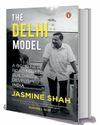
ON AUGUST 15, 2022, Prime Minister Narendra Modi took a long-term view of the Indian economy by outlining an ambitious vision—India to be a developed economy by 2047. The last time an Indian prime minister had outlined a long-term vision was in 1956 when the ambitious, unrealistic, insular and disastrous second Five-Year Plan was unveiled for India’s futuristic development (a state directed investment plan later christened as the Nehru-Mahalanobis licence raj model).
This Five-Year Plan was to bring in more curtailment of economic freedom, a ‘plan’ which ended with the extinguishing of both economic and political freedom with the announcement of the Emergency in 1975. Six years earlier, in 1969, Bank nationalisation was introduced; and by 1991, India was in a severe debt crisis, pledging gold to the IMF. The year also marked the beginning of a strong reversal of the past—economic reforms and economic growth, and the dismantling of the licence raj model was to be the new future of the Indian economy.
That new and productive future is the essence of Modi’s vision of Viksit Bharat. It has its deficiencies as it is currently implemented—it is hoped that the ambition will correct the current economic policy mistakes. The determinants of growth suggest that the 2047 goals are realistic.
At the time the vision was outlined, the BJP had just recorded its second straight big victory in the elections in Uttar Pradesh, India’s largest state. The Indian economy had also recovered strongly from the Covid shock. Although there was great uncertainty about India’s expected growth rate over the next 25 years at that time, that uncertainty is less today. For the third year running, India has recorded the fastest GDP growth rate among the world economies (upwards of 7.5 per cent a year) and the IMF estimates India will retain the top spot at least until 2029.
This story is from the August 18, 2024 edition of THE WEEK India.
Start your 7-day Magzter GOLD free trial to access thousands of curated premium stories, and 9,000+ magazines and newspapers.
Already a subscriber ? Sign In
This story is from the August 18, 2024 edition of THE WEEK India.
Start your 7-day Magzter GOLD free trial to access thousands of curated premium stories, and 9,000+ magazines and newspapers.
Already a subscriber? Sign In

Forging the future
As the curtain falls on 2024, I take pride in the extraordinary milestones achieved under the leadership of Prime Minister Narendra Modi. This year stands as a testament to the Modi government's resolve to forge a resilient and forward-looking Bharat. From groundbreaking advancements in infrastructure to visionary global initiatives, these efforts resonate deeply with the vision of Viksit Bharat.

Our strange democracy
Abraham Lincoln is lauded as among the very best presidents the US ever had: the statesman par excellence successfully steered the nation through the devastating and perilous years of the American civil war. Not only did Lincoln manage to keep his country united, he also ensured the passage of the 13th amendment to the US constitution, which abolished slavery.

Five years of post-pandemic fashion
It has been five years since we discovered what Covid-19 was, and five years since it disrupted the world forever. The World Health Organization activated their emergency systems on January 1, 2020, and informed the world by January 4, 2020. By the end of that week, they had set guidelines for various countries to follow. Comparable to the Spanish flu of 1918, more than 7 million people have died of Covid according to official data. Unofficially, no one has an idea. WHO has just this week asked China to provide critical data to understand the virus's origins as a “moral and scientific imperative”.

Community spirit
Rhythm of Dammam opens a window to the world of African-origin Siddis of Uttara Kannada

'Breaking' down a scandal
Society Girl is not just a case study of a high-profile death in Pakistan but also a stark commentary on media trials

Progress card
Jasmine Shah's book tells you what the AAP has achieved in Delhi in the last 10 years

SENSE IN NONSENSE
In his latest book of poetry, Ruskin Bond is at his funniest

Get ready for Trump bump
The ‘butterfly effect’ is a beautiful, mysterious metaphor of the planet’s interconnectedness.

QUIET FLOWS THE FAITH
The melding of an ancient amorphous faith and the latest science; of an antique tradition and new practices; ways of life older than memory and new expressions is happening at Prayagraj in Uttar Pradesh.

Trash to treasure
How a weed-choked Dal Lake spurred Maninder Singh's journey to become a waste management visionary